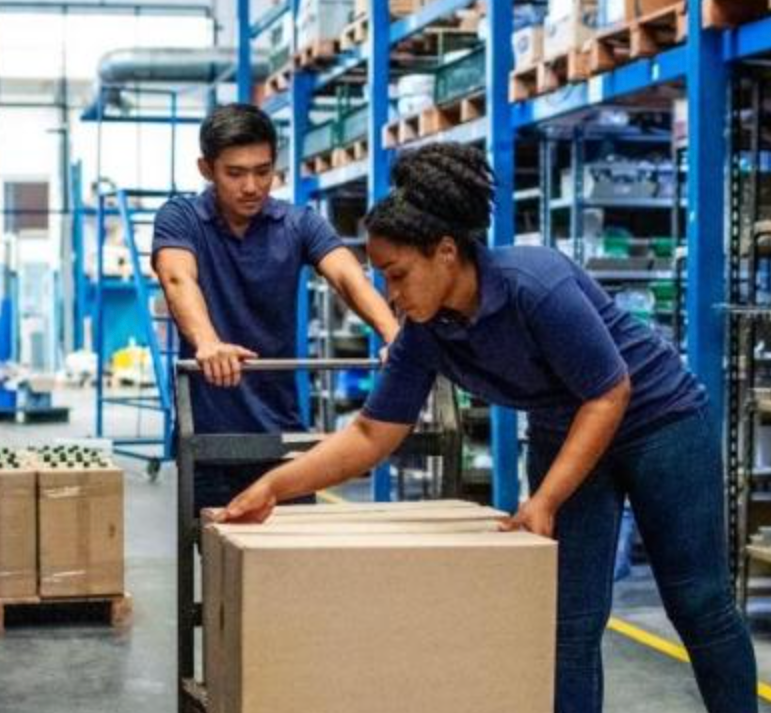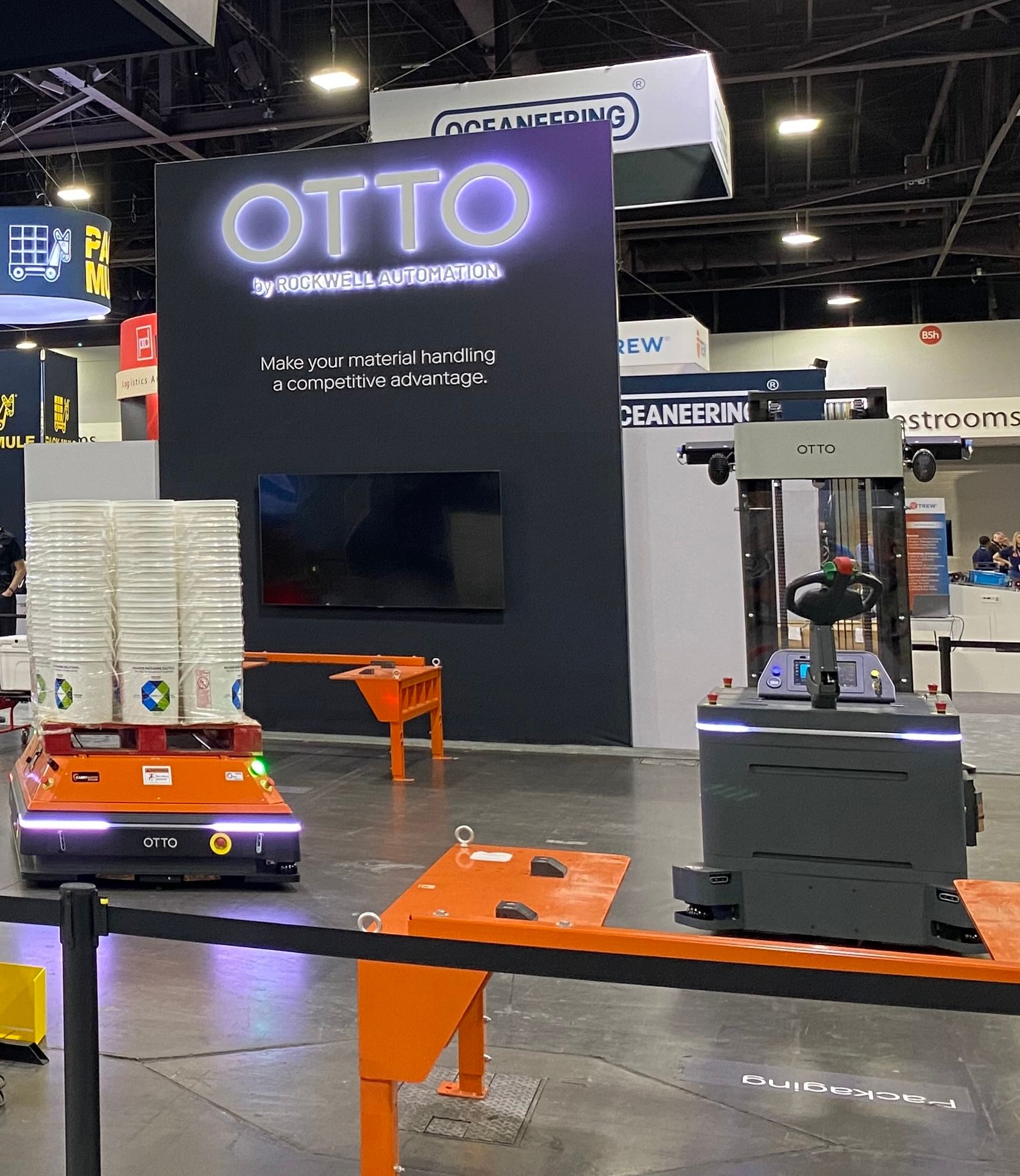Blog
Meet OTTO Lifter, your new co-worker

We’ve seen tremendous interest in the new OTTO Lifter since we launched it at the MODEX supply chain trade show in March. We designed OTTO Lifter to address many warehouse automation and material handling challenges that manufacturers face. In our recent webinar, OTTO's VP of Product, Jay Judkowitz, and Director of Product Management, Tricia Hamak-Sundeen, shared insights on how OTTO Lifter can address these challenges.
Why automation now?
Judkowitz started the webinar by looking at the trends that are driving the need for warehouse automation. He said that the need for automation is due to an increase in demand and customer expectations.
“People want things to be more customized and they want them to ship more quickly. Manufacturers want to be able to react to changing needs of the consumer base—so having a more flexible manufacturing environment, factory, or warehouse is needed to meet these consumer needs and stay competitive in today’s economy,” Judkowitz said.
The need for automation is also driven by labor challenges across almost every industry and market. Judkowitz said rising labor costs and a constrained labor pool make using robots the right choice for automating menial tasks so manufacturers can use their valuable people in more fulfilling, higher-paid, and creative roles.
Autonomous robots like OTTO Lifter also ensure continuity of operations. Judkowitz used the COVID-19 pandemic as a wake-up call for manufacturers.
“I think everybody who has lived through COVID realizes that it’s really important to have critical functions that are the lifeblood of your operation be done by machines that can’t get sick and don’t have to take time off” Judkowitz concluded.

Manufacturers are facing unprecedented challenges. Automation has moved from nice-to-have to must-have.
Success in action
Judkowitz shared two recent case studies where OTTO Motors autonomous mobile robots (AMRs) like the OTTO 100 and OTTO 1500 have improved efficiency and reduced costs.
Auto parts supplier Danfoss Power Solutions previously moved parts by using hoists in the air—a dangerous and costly process. Since implementing OTTO Motors AMRs, Danfoss has eliminated 70,000 hoist interactions per year and has redeployed five material handlers into other warehouse roles.

Another example is automotive parts manufacturer Faurecia Interior Systems. Faurecia needed a solution that would ensure timely material delivery with minimal downtime. After implementing eight OTTO AMRs, they’ve been able to achieve an 11 month ROI and reduce their work cell sizes by 15%.
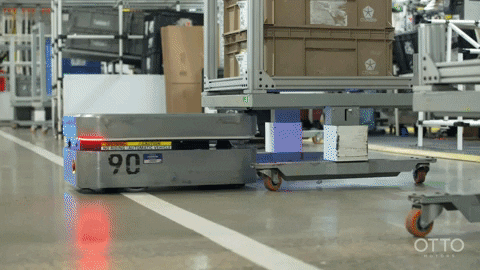
Proven technology for material handling
OTTO Motors technology is built on four pillars—the autonomous robots, our AMR operating system, fleet management software, and the professional services for successful implementations. Judkowitz said that that same proven technology powers the OTTO Lifter.
One of the really important characteristics is that our AMRs work in dynamic environments. They don’t have to be completely stationary. They don’t have to be guided. The robots can think for themselves and deal with changing environments.
Jay Judkowitz
VP Product, OTTO Motors
Judkowitz added that OTTO Motors has 13 years of experience in autonomous robot development with 0 safety incidents, while driving over 3 million production hours. OTTO Motors has deployed industrial robots at over 100 sites worldwide and completes 400,000+ deliveries each month.
“We’ve had a lot of experience and a lot of success,” Judkowitz concluded.
Forklift market challenges
Hamak-Sundeen said that one of the biggest challenges for manufacturers is finding enough qualified people to fill their roles, citing a recent Deloitte study that reported there will be 2.1 million unfilled jobs by 2030 in the U.S.
“The inability to fill these open positions is slowing growth and costing our economy trillions of dollars. This problem isn’t a new phenomenon, and it’s here to stay,” Hamak-Sundeen said.
Improving working conditions and safety are critical to retaining employees—especially in warehouse and manufacturing facilities. Hamak-Sundeen said that some of the most severe industry injuries in material handling occur due to forklift accidents.
“OSHA’s most recent estimates indicate that between 35,000 and 62,000 injuries occur every year involving forklifts. Some experts believe that with more stringent training or automation, a very high percentage of these accidents could be avoided,” Hamak-Sundeen said.
OTTO Lifter in action
OTTO Lifter’s core skill is autonomously picking up and dropping off pallets from the floor or other equipment like a conveyor of heights of up to 30 inches. Built on OTTO Motors’ autonomy platform with over 3 million hours in production, OTTO Lifter allows you to automate different workflows and handoffs throughout the factory or warehouse, such as:
- Moving materials between receiving, storage, picking, and outbound bays
- Cross-docking
- Creating and clearing staging lanes
- Moving loads from a palletizer to stretch-wrapper
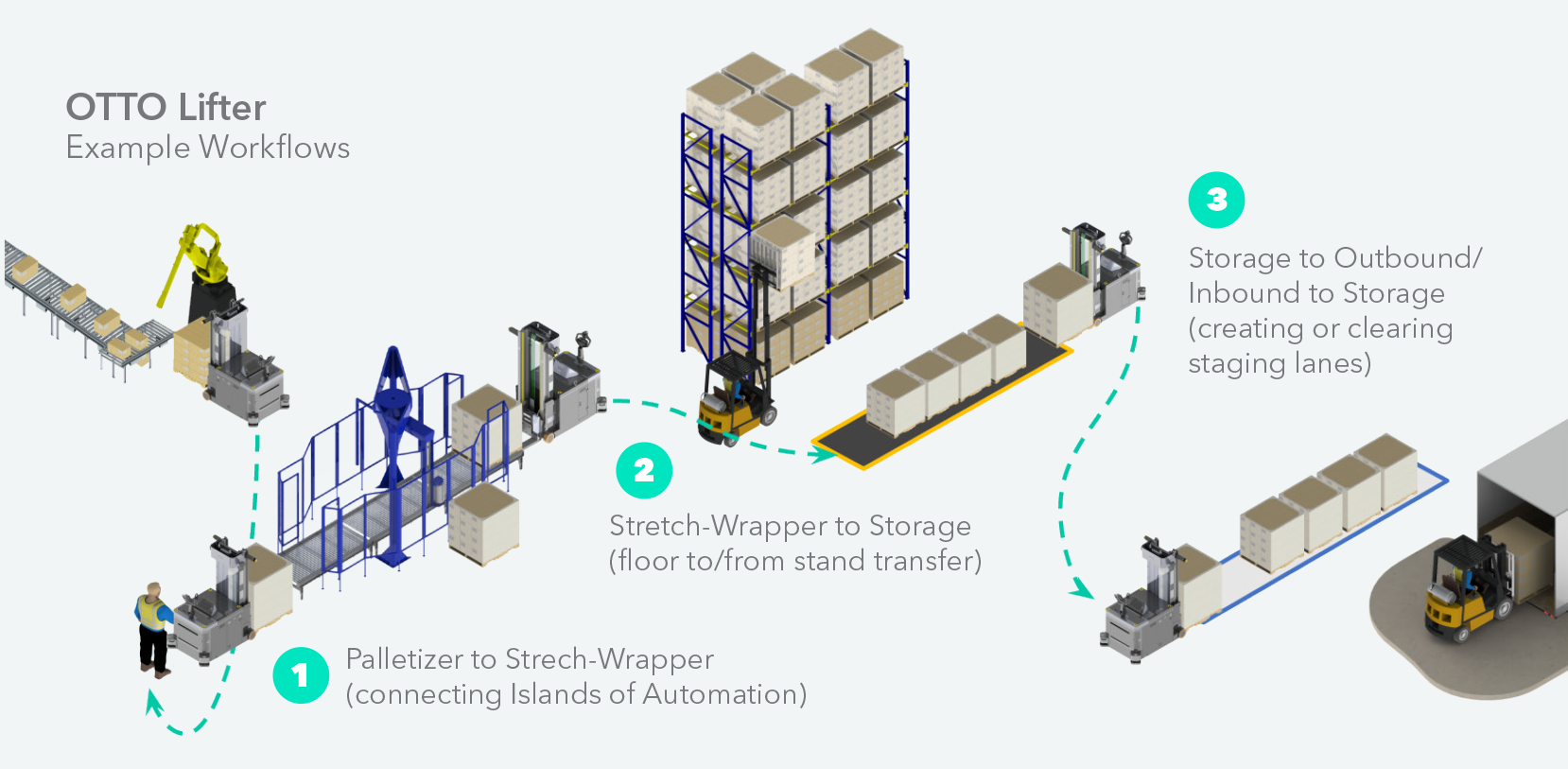
OTTO Lifter workflows.
OTTO Lifter has a maximum payload capacity of 2650 pounds and can also be manually controlled to provide up to a 106-inch lift height.
OTTO Lifter can work right alongside your other team members and help them to be more efficient by handling that time consuming transport.
Tricia Hamak-Sundeen
Director Product Management, OTTO Motors
What makes OTTO Lifter the smartest autonomous forklift?
While OTTO Lifter has the physical power to replace traditional forklifts, the real magic is its software.
“OTTO Lifter is pretty smart,” Hamak-Sundeen said. “It is equipped with the intelligence and skills to accomplish the tasks it needs to do.”
The technology in OTTO Lifter delivers five key features:
1. Intelligent pallet detection
OTTO Lifter has a highly robust and reliable pallet detection system. This means it can find pallets even if they aren’t perfectly placed or precisely aligned. In addition, the forks on an OTTO lifter have embedded sensors to ensure the pallet is properly loaded and centered on the forks for safe transport throughout the facility.
Watch OTTO Lifter's autonomous stretch wrap piercing.
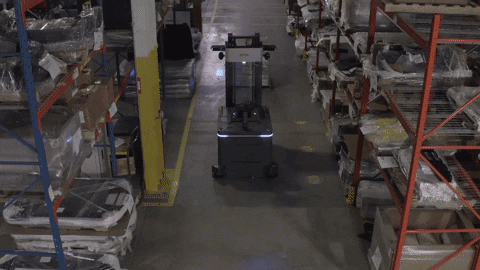
2. One-touch autonomous lane clearing
OTTO Lifter can create and clear pallet lanes. It can systematically identify and move pallets until the lane is cleared or created, allowing OTTO Lifter to accomplish its work efficiently and productively with limited instruction.
Built into OTTO Lifter is a unique feature called a Sensor Monitoring Zone. For example, if a pallet had been replenished into a space where OTTO Lifter had just picked a pallet, OTTO Lifter’s sensors would detect the new pallet, pick it up, and deliver it to its intended location.
3. Navigation
OTTO Lifter incorporates OTTO’s Adaptive Fieldset Technology first introduced on OTTO 1500. Adaptive Fieldset Technology allows the OTTO Lifter to go fast through turns while maintaining safety.
Watch OTTO Lifter turning at full speed.
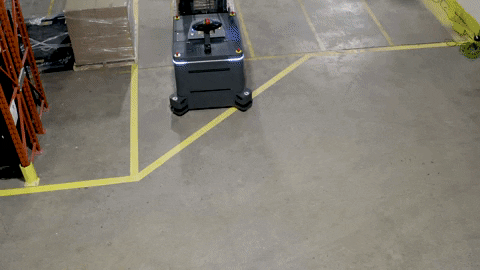
4. Robust and engaging user experience
OTTO Lifter stands out in how it interacts with people and its surroundings by leveraging OTTO’s proven audio visual system and hosting a unique interactive tablet display, integrated into the robot. This can be used to communicate status, input work instructions, and diagnose any issues.
The blue lights on OTTO Lifter are also common to forklift experiences and alert bystanders to its travel path.
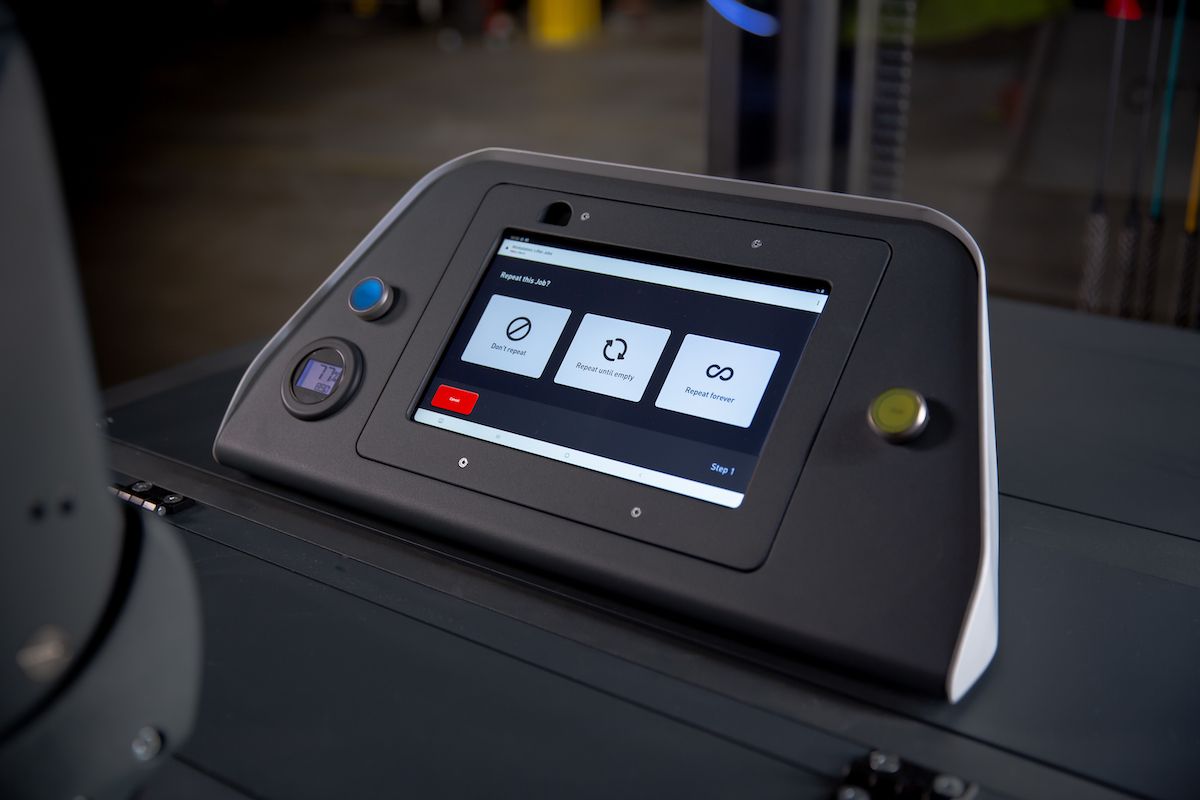
OTTO Lifter's integrated tablet.
5. Single Fleet Manager for all OTTO robots
OTTO Lifter utilizes the same proven OTTO Motors fleet management software as our other AMRs. The single fleet manager allows one single tool to manage multiple given workflows across your facility.
Summary
We designed OTTO Lifter to be an integral part of your material handling team for today’s needs and tomorrow’s challenges. We also designed it to deliver a fast ROI. The number of OTTO Lifters required to accomplish a task and its ROI is highly dependent on your application. Hamak-Sundeen gave an example using a leasing model of approximately $3,000 per month. In a three-shift operation, that would translate to the equivalent of $9 an hour.
OTTO Lifter can help you lower your operating costs and optimize your workforce while safely working alongside other team members. We’re very proud of it and know that manufacturers can trust OTTO to get the job done.





